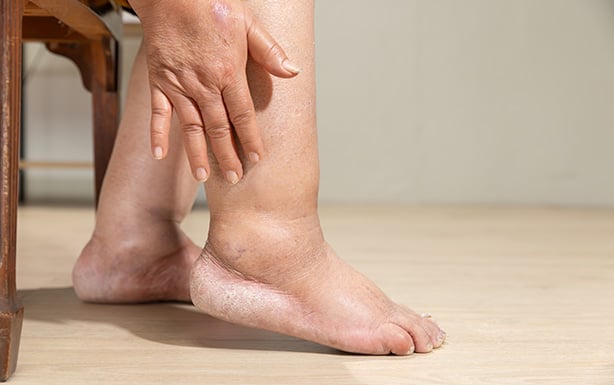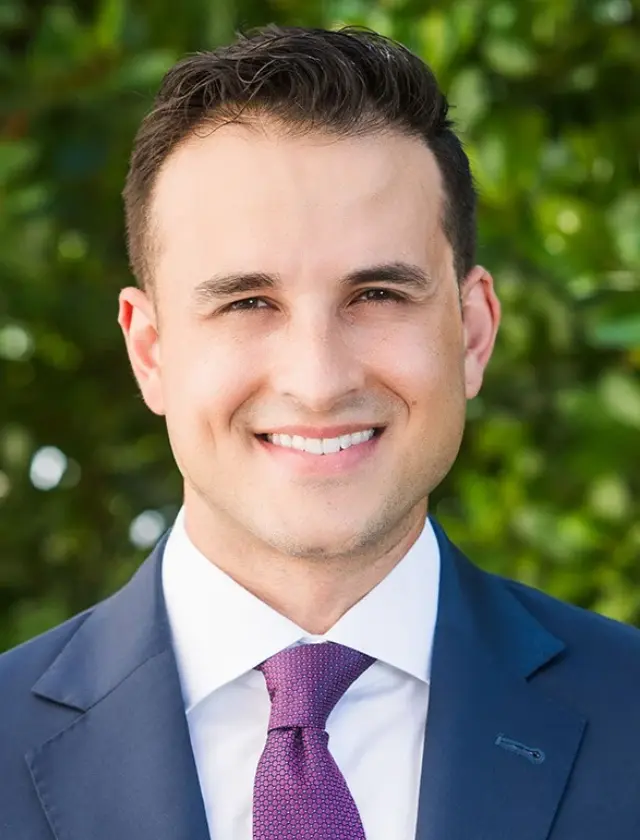-banner-1.jpg?width=1156&height=650&name=Piriformis%20Syndrome%20(T2)-banner-1.jpg)
Lymphedema Treatment in Florida: Surgical Options for Long-Term Relief
-banner-1.jpg?width=1156&height=650&name=Piriformis%20Syndrome%20(T2)-banner-1.jpg)
What Causes Lymphedema?
Lymphedema isn’t just about swelling—it’s a chronic, often misunderstood condition that can significantly impact your quality of life. It usually affects the arms or legs, and begins when the lymphatic system is damaged or blocked, often due to cancer treatment, surgery, radiation, or physical trauma. In the early stages, symptoms may seem manageable. But without treatment, lymphedema can progress—leading to painful swelling, thickened skin, recurring infections, and loss of mobility.
Fortunately, lymphedema is treatable. Thanks to breakthroughs in microsurgical techniques, patients today have access to advanced, minimally invasive surgical options that were not available just a decade ago.
Watch The Video to Learn More
Check Your Symptoms: Are You Experiencing Any of the Following?
- Persistent swelling in one arm or leg, especially after cancer treatment
- Heaviness, tightness, or aching in the limb
- Frequent skin infections (e.g., cellulitis)
- Hardening or thickening of the skin
- Difficulty fitting into clothes or shoes due to limb size
Lymphedema Treatment: Do You Know Your Surgical Options?
Lymphovenous bypass is a delicate supermicrosurgical procedure that creates new connections between the lymphatic vessels and nearby veins, allowing excess lymph fluid to bypass blocked or damaged pathways. This procedure is most effective in the early stages of lymphedema, before the tissues have undergone significant structural changes. Because it’s minimally invasive, LVB can offer meaningful relief with shorter recovery times, often reducing swelling and the long-term need for compression garments.
Vascularized lymph node transfer involves transplanting healthy lymph nodes—typically from the neck or groin—to the area affected by lymphedema. Once in place, these nodes help rebuild the lymphatic drainage system, encouraging natural flow and reducing fluid buildup over time. This procedure is often recommended for patients with moderate to advanced lymphedema, especially when the condition results from cancer surgery or radiation. VLNT has been shown to lower infection risk, slow disease progression, and improve overall limb function.
In long-standing or advanced cases of lymphedema, fat and fibrotic tissue can accumulate in the affected limb, leading to visible enlargement, discomfort, and limited mobility. Liposuction can effectively remove this excess tissue, significantly reducing limb size and restoring a more natural contour. While it doesn’t correct the underlying drainage problem, when combined with compression therapy, liposuction provides lasting improvements in both appearance and function—especially for patients whose condition has progressed beyond the reach of bypass or transfer alone.
For many patients, the most effective treatment plan includes a combination of techniques. Depending on your specific condition and goals, our surgeons may recommend a tailored approach that incorporates LVB, VLNT, and/or liposuction. This multi-modal strategy can offer the most comprehensive results—addressing both fluid drainage and tissue changes to improve mobility, reduce complications, and help you regain control over your daily life.
See How We’re Changing Lives, One Patient at a Time
What Are the Benefits of Lymphedema Surgery?
Am I a Candidate for Lymphedema Surgery?
If you’ve tried compression therapy, but the swelling, pain, or infections keep coming back, you may be a candidate for lymphedema surgery. A consultation can help determine the best approach based on your stage, symptoms, and goals.
You may be a good candidate if you:
- Have chronic arm or leg swelling that limits daily life
- Experience frequent infections like cellulitis
- Are post-cancer treatment with progressive lymphedema
- Have not improved with physical therapy or compression alone


Why Is Lymphedema Often Misdiagnosed?
Lymphedema often hides in plain sight. In the early stages, it can look like post-surgical swelling or weight gain—leading many patients down a long road of physical therapy, compression, and uncertainty. Even with attentive care, the true underlying issue isn’t always obvious. That’s where our team at The Institute of Florida steps in. We’re often the next call when symptoms persist without clear answers. With a focused lens on lymphatic conditions and experience in complex presentations, we see patterns others may not—helping patients finally get the clarity they deserve.

Considering Lymphedema Surgery? What to Expect:
Precision Diagnostics
Every surgical plan begins with advanced imaging to map your lymphatic system. We use techniques like indocyanine green (ICG) lymphography, lymphoscintigraphy, and MRI lymphangiography to visualize lymphatic flow, pinpoint blockages, and guide surgical planning.Tailored Surgery
Your treatment plan is based on the severity and stage of your lymphedema. Our surgeons specialize in lymphovenous bypass (LVB) for early cases, vascularized lymph node transfer (VLNT) for moderate to advanced cases, and liposuction for fibrotic, late-stage disease. Many patients benefit from combined procedures that restore function and reduce limb size.Rapid Recovery
Most lymphedema surgeries are outpatient or require a short hospital stay. Recovery time depends on the procedure, but many patients return to light activity in 2–4 weeks. Unlike more invasive surgeries, these microsurgical techniques are designed to minimize downtime while delivering long-term relief.Why Trust The Institute of Florida?

Nationally recognized as a LE&RN Surgery Center of Excellence
We are one of the few centers in the country honored by the Lymphatic Education & Research Network for leadership in lymphedema surgery and patient outcomes.
Over 1,800 Microsurgical Procedures Performed For Lymphedema
Our team brings deep expertise in lymphovenous bypass and lymph node transfer—backed by one of the largest procedural volumes reported in the U.S.
Advanced Imaging That Guides Smarter Surgery
We use real-time mapping technologies like ICG lymphography and MRI lymphangiography to ensure every surgical plan is precise, personalized, and based on clear visualization of lymphatic flow.
Care That’s Coordinated, Not Fragmented
Our surgeons work directly with oncologists, physical therapists, and wound care teams to ensure you’re not just treated—you’re supported across every phase of care.
Meet Florida’s Top
Nerve Surgery Experts
Ready to Get Answers?
If you’ve been told there’s nothing more to do, let us take another look. Our Florida lymphedema specialists are here to evaluate your case and help you move forward—with clarity and confidence.
Now seeing patients in Ft. Lauderdale and Boynton Beach.
Frequently Asked Questions
Lymphedema is best treated by a team that includes microsurgeons trained in lymphatic reconstruction, not just general surgeons or physical therapists. At The Institute, our lymphedema specialists perform advanced procedures like lymph node transfer and lymphatic liposuction to restore drainage and reduce swelling.
Surgical success depends on the type and stage of your lymphedema and your commitment to follow-up care. Most patients experience lasting symptom relief when surgery is paired with compression and physical therapy. We’ll guide you on how to maintain your results long-term.
It varies. Some patients see a difference in swelling and heaviness within weeks, especially after liposuction. Others notice gradual improvements in fluid drainage and limb shape over 3–6 months. We'll track your progress closely with post-op imaging and measurement.
Lymphedema isn’t life-threatening by itself, but untreated swelling can lead to complications—including infections, immobility, and skin breakdown. Proper treatment, including surgery when appropriate, helps patients live longer, healthier, and more active lives.
Lymphedema is considered a chronic condition, but for many patients, surgery provides long-term control. While you may always need some level of compression, the weight, swelling, and stiffness can be dramatically reduced—often for good.
Yes—staying well-hydrated supports overall lymphatic function. Dehydration can cause fluid retention and make swelling worse. Drinking water won't “cure” lymphedema, but it’s part of a holistic care approach that includes movement, compression, and nutrition.

.jpg?width=1280&height=720&name=maxresdefault%20(2).jpg)
.jpg?width=1280&height=720&name=maxresdefault%20(3).jpg)



.webp)


